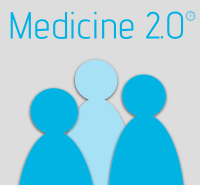Planning the Development of the Singapore National Health Portal
|
If you are the presenter of this abstract (or if you cite this abstract in a talk or on a poster), please show the QR code in your slide or poster (QR code contains this URL). |
Abstract
Background:
Singapore is an island city-state in Southeast Asia with a land area of approximately 700 km2 and a multi-ethnic resident population of about 3.6 million. A vibrant global city and a thriving centre of commerce and industry, Singapore's competitive modern economy enjoys high economic growth, high literacy rates, and life expectancy comparable to other high-income countries.
Based on the National Health Survey in 2004, an estimated 1 million Singaporeans suffer from at least one of the four major chronic diseases, namely diabetes mellitus, hypertension, lipid disorders, and stroke. To address the growing burden from these chronic diseases, the Singapore government embarked on a national strategy to promote the concept of Active Health Management (AHM) to all Singaporeans. This strategy focuses on inculcating individual responsibility towards one's health condition through raising awareness and providing patient empowerment among the population.
The Health Promotion Board (HPB) is the government agency responsible for driving health promotion initiatives to improve the health and fitness of Singaporeans and to empower Singaporeans to attain optimal health throughout life. As part of the AHM strategy, HPB was tasked with developing the National Health Portal (NHP) - a personal health information portal enhanced with tailored empowerment tools for behavioural change.
Vision:
The vision for the NHP is a one-stop web portal that empowers Singaporeans and their care-givers with their personal health and medical information and provides preventive and monitoring tools for personalised health management, so as to achieve better health outcomes.
Conceptualising the NHP:
The NHP Taskforce, consisting of stakeholder representatives, was formed to drive the development of the NHP. To understand the landscape for health portals, a feasibility study was commissioned. Phase I involved a global review of health portals; Phase II involved dialogues with local stakeholder representatives to assess their readiness and gather their inputs for the NHP. Plans for the implementation of the National Health Portal were developed based on the study findings.
Implementation Plans for the NHP:
The NHP aims to empower users by providing access to their personal health information. This includes self-entered data (e.g. user profile, Health Risk Assessment) with their Electronic Medical Records (EMR) obtained from healthcare providers. Based on the user's personal health information, tailored health information, relevant Behavioural Health Intervention Programmes (BHIP), and supporting health management tools will be provided.
The implementation of the NHP will be conducted over 3 distinct phases from 2008 to 2011. The initial phase will focus on self-entered data of at-risk individuals and chronic patients from the public health sector, and include three BHIPs (weight management, smoking cessation, and diabetes management). Integration with EMRs from public sector healthcare providers, interfacing with the private healthcare sector medical records, and the inclusion of additional BHIPs will be implemented in subsequent phases.
Conclusion:
The experience of planning the development of the Singapore NHP will be valuable for other countries that are considering a similar strategy to support AHM within the population.
Singapore is an island city-state in Southeast Asia with a land area of approximately 700 km2 and a multi-ethnic resident population of about 3.6 million. A vibrant global city and a thriving centre of commerce and industry, Singapore's competitive modern economy enjoys high economic growth, high literacy rates, and life expectancy comparable to other high-income countries.
Based on the National Health Survey in 2004, an estimated 1 million Singaporeans suffer from at least one of the four major chronic diseases, namely diabetes mellitus, hypertension, lipid disorders, and stroke. To address the growing burden from these chronic diseases, the Singapore government embarked on a national strategy to promote the concept of Active Health Management (AHM) to all Singaporeans. This strategy focuses on inculcating individual responsibility towards one's health condition through raising awareness and providing patient empowerment among the population.
The Health Promotion Board (HPB) is the government agency responsible for driving health promotion initiatives to improve the health and fitness of Singaporeans and to empower Singaporeans to attain optimal health throughout life. As part of the AHM strategy, HPB was tasked with developing the National Health Portal (NHP) - a personal health information portal enhanced with tailored empowerment tools for behavioural change.
Vision:
The vision for the NHP is a one-stop web portal that empowers Singaporeans and their care-givers with their personal health and medical information and provides preventive and monitoring tools for personalised health management, so as to achieve better health outcomes.
Conceptualising the NHP:
The NHP Taskforce, consisting of stakeholder representatives, was formed to drive the development of the NHP. To understand the landscape for health portals, a feasibility study was commissioned. Phase I involved a global review of health portals; Phase II involved dialogues with local stakeholder representatives to assess their readiness and gather their inputs for the NHP. Plans for the implementation of the National Health Portal were developed based on the study findings.
Implementation Plans for the NHP:
The NHP aims to empower users by providing access to their personal health information. This includes self-entered data (e.g. user profile, Health Risk Assessment) with their Electronic Medical Records (EMR) obtained from healthcare providers. Based on the user's personal health information, tailored health information, relevant Behavioural Health Intervention Programmes (BHIP), and supporting health management tools will be provided.
The implementation of the NHP will be conducted over 3 distinct phases from 2008 to 2011. The initial phase will focus on self-entered data of at-risk individuals and chronic patients from the public health sector, and include three BHIPs (weight management, smoking cessation, and diabetes management). Integration with EMRs from public sector healthcare providers, interfacing with the private healthcare sector medical records, and the inclusion of additional BHIPs will be implemented in subsequent phases.
Conclusion:
The experience of planning the development of the Singapore NHP will be valuable for other countries that are considering a similar strategy to support AHM within the population.

Medicine 2.0® is happy to support and promote other conferences and workshops in this area. Contact us to produce, disseminate and promote your conference or workshop under this label and in this event series. In addition, we are always looking for hosts of future World Congresses. Medicine 2.0® is a registered trademark of JMIR Publications Inc., the leading academic ehealth publisher.

This work is licensed under a Creative Commons Attribution 3.0 License.



